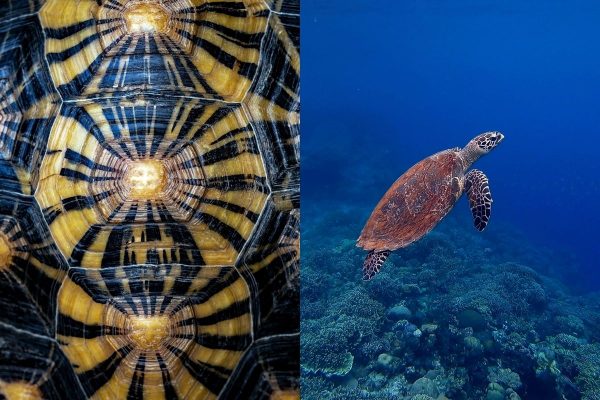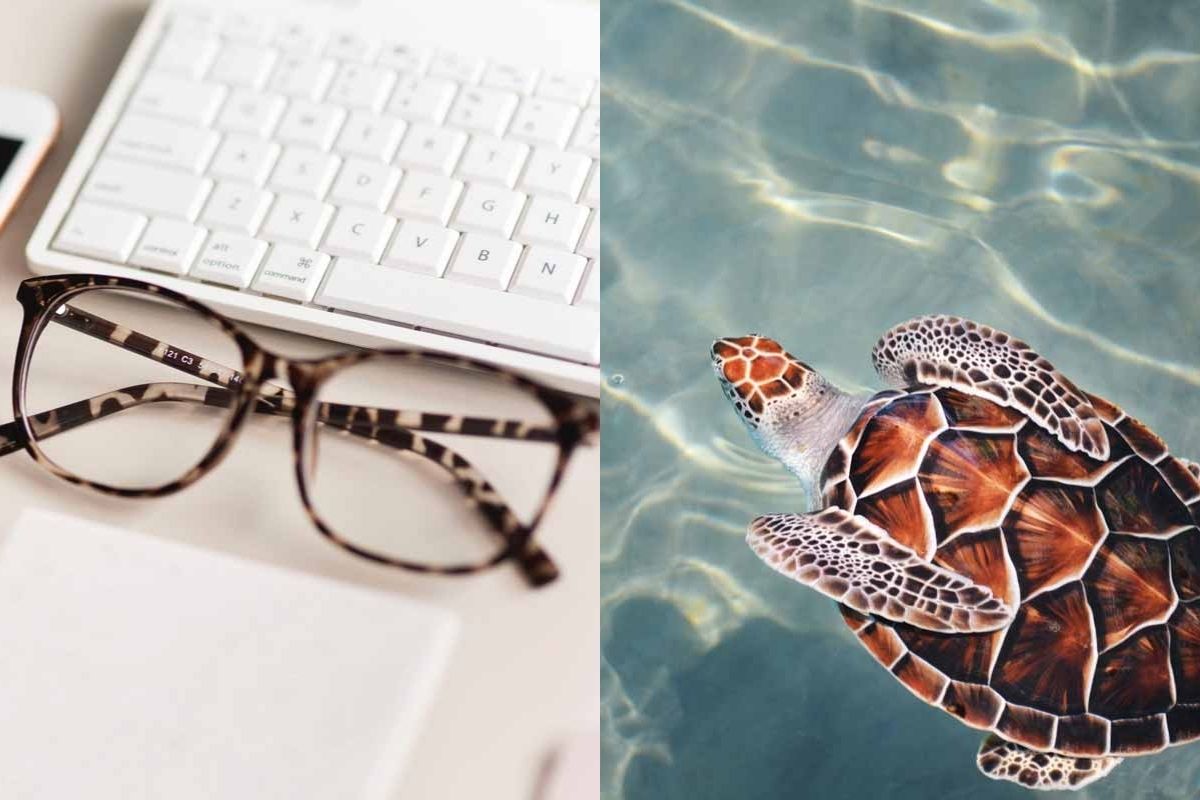What happened with tortoiseshell in the past century? Can you still but regular tortoiseshell? Find out more about this enigmatic material today.
Table of Contents
What Is Tortoiseshell? Are Tortoiseshell Really Comes from Turtle?
What is the tortoiseshell material?
The modern tortoiseshell material that we see today is made from artificial materials, not the real thing. If we are talking about antique tortoiseshell ornaments and jewelry, then yes, those are made from the animals’ shell. The earliest tortoiseshell material was derived from the horny shell of the hawksbill turtle.

The material became so popular because of the natural, beautiful patterns and the marbling that was common of the horny shell. At one point in history, natural tortoiseshell became all the rage, and it was used extensively for so many different ornamental applications and jewelry.
The first tortoiseshells were first imported to Rome. The material came from Egypt. Up to the 17th century, it was exceedingly common to find a tortoiseshell product in almost every home.
Snuffboxes made of the stuff were also widespread. As long as a decorative item can have a decorated outer layer, tortoiseshell can be applied.
Creating the tortoiseshell was straightforward: the shell was attached to the bones of the tortoise, and thus, the heat was applied to make the shell more pliable. The natural shields were compressed alongside with heat application. Artisans rasped any unnecessary textures on the surface of the shell.
When the shell had to be remolded to another shape or size, the artisans applied heat to make the shields more pliable. Lathes were also used to reshape the shells to almost every conceivable shape or form.
Keep in mind. However, tortoiseshell is considered illegal in many countries, and it is impossible to buy the ‘genuine article’ online.
Are The Tortoiseshell Acetate Accessories Made of Real Tortoiseshell?

Tortoiseshell acetates sold today are not made of real tortoiseshell. Instead, they’re made of plastics that are designed with dyes to simulate the real thing.
Is tortoiseshell illegal?
Yes, the trade of genuine tortoiseshell has been illegal since 1973 when the Endangered Species Act was put into effect. The endless harvesting of hawksbill turtle led to the decline of the species, and it was alarming. Other animals have also become endangered due to the demand for exotic materials and animals in general.
Why Was Tortoiseshell Used as Jewelry Items in The Past?
Tortoiseshell became all the rage for several centuries because of the natural marbling and color of natural shells.
Tortoiseshell had an eternal charm to it, and people could not get enough of it. But as with anything humans consume, either through industry or literal consumption, the hawksbill turtle’s harvesting nearly decimated the species, so fishing controls were imposed. Suffice to say, it’s the same trend when you’re dealing with any organic material derived from animals.
What Kind of Accessories Made Tortoiseshell Acetate?
Today, tortoiseshell acetate is used to create different items, both personal and ornamental. The most popular accessories are glasses, earrings, and other personal accessories.

The most iconic of all the items created with tortoiseshell acetate are glasses. We say these are iconic because “horn-rimmed glasses” are legendary in literature and comics. Horn-rimmed glasses are the ultimate signs of the intellectual, the student, and maybe also librarians. It was a most pointed accessory because tortoiseshell is so stylish and a real classic. Today, tortoiseshell glasses are still being produced, but only with the acetate material. They’re still very stylish, and if you are looking for a unique piece to add to your collection, we recommend exploring the world of tortoiseshell glasses because there are so many types of them.
Tortoiseshell earrings also abound jewelry stores and places like Amazon. What makes newer tortoiseshell designs if they have upgraded the color palette generally associated with tortoiseshell jewelry. The tortoiseshell palettes we see now include beige, pinks, blues, yellows, and almost every conceivable color in the spectrum from the usual greens and browns.
The most common type of earrings made with tortoiseshell acetate are regular hoop earrings, but there are also more classical-looking drop earrings for those who like a more vintage look. There is a sufficient number of options for different ages, and shopping for tortoiseshell earrings will be a joyful affair.
If you are thinking of completing your look this year with more tortoiseshell accessories, we recommend checking out the sheer variety of accessories available. In addition to endless permutations of tortoiseshell earrings, there is also an abundance of tortoiseshell cellphone cases, hairclips, ornaments (for your bedroom or your home in general), sunglasses, the famous tortoiseshell cat statuette, bracelets and bangles, rings, cellphone stands, tassel earrings, wall decorations, press-on nails, and so many more accessories.
In short, you can easily create a massive tortoiseshell collection at home with minimal effort because of the wide availability of tortoiseshell accessories.
What Is the Difference Between Real and Synthetic Tortoiseshell?
Manufacturing and selling genuine tortoiseshell has been illegal for several decades now. However, it is understandable that some collectors are still looking for antiques made with the real thing. The most common test is called the hot pin test, and it involves slightly burning the shell’s surface to determine if it’s plastic or not.
Real horn won’t have a burning plastic smell. However, the hot pin test is something that you can’t do if you are testing in a store or if you have already purchased the item. The less destructive test would be to check the edges of the horn for insect bites. Some insects will bite down and feed on turtle horn just because.
So the little blurs and burrs on the edge of the horn may indicate it is the genuine article. The third visual test checks the age of the item versus how much it has darkened over the years. Even in shell and bone, organic compounds will interact with open-air compounds and eventually darken over time. The darkening will be generalized and will even involve the natural colors of the shell.




Leave A Comment